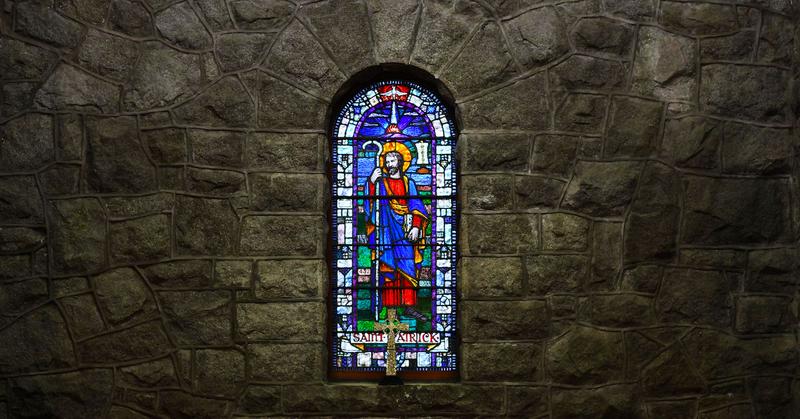Saint Patrick Blue: He Wasn't Always Green
By | March 14, 2020

On Saint Patrick's Day, we wear green clothing, drink green beer, and watch as some prominent rivers are dyed green. The verdant color is, after all, the color of the Emerald Isle, so it must be associated with Saint Patrick, right? Wrong. Saint Patrick was originally associated with the color blue, not green, to the point that there's an entire shade named "Saint Patrick blue." So why do we celebrate Saint Patrick's Day with the wearing o' the green?

Who Was Saint Patrick?
Saint Patrick was born Maewyn Succat in the fourth century CE to a Christian family living in Roman-held Britain. As a teen, he was kidnapped from his home and forced to work as a slave in Ireland, and although the circumstances left a lot to be desired, he learned to appreciate the beauty of the country.
After he escaped from his captors six years later and returned to his family, he studied to become a cleric and then became a bishop. He returned as a Christian missionary to the island of his ordeal, where he established a center for Christianity and became the patron saint of Ireland.

Saint Patrick And The Shamrock
According to legend, Saint Patrick used the seamog, or shamrock, to teach the Holy Trinity to his Irish converts. The green, three-leaved plant that commonly grows in Ireland was an ideal symbol of the Father, Son, and Holy Ghost. As the shamrock has three leaves, so, too, does the Holy Trinity consist of three branches of the same entity. At the feast of Saint Patrick, held on March 17, revelers wore shamrocks on their lapels to honor the patron saint of Ireland. Donning a shamrock on Saint Patrick's Day was called "the wearing of the green."

Ireland And The Color Blue
Although the country's long been as green as a grasshopper, the color most associated with Ireland used to be blue. Flaitheas Eireann, the mythical sovereignty of Ireland, was depicted as a woman wearing a blue robe. Later, a 10th-century Irish queen took the name Gormfhlaith from the Irish words for "blue" and "queen." When Henry VIII, the 16th-century English king who declared himself King of Ireland, commissioned the official coat of arms for Ireland, it featured a rich blue background. Two shades of blue are still widely used in the Ireland: "presidential blue" and "Saint Patrick blue."

Saint Patrick Blue
Saint Patrick, too, used to be associated with the color blue. Old paintings and engravings of Saint Patrick show him wearing blue robes, and the shade of blue named "Saint Patrick blue" can be traced back as far as the 1780s. When the Anglo-Irish Order of Saint Patrick, an order of chivalry that served all of Ireland, adopted the color blue as its emblem, they chose the same shade of blue that has become known as "Saint Patrick blue."

The Move To Green
One possible explanation for the introduction of the color green to represent Saint Patrick is connected to those shamrocks his devotees wore to his feast. It is believed that, as the years went by, the phrase "wearing of the green" caused some confusion. "The green" originally referred to the shamrock and not the color, but by the late 1700s, misinformed people took to wearing green clothing on that day.

A Color Of Nationalism
During the 1798 Irish Rebellion, when Ireland attempted to end the British hold on the country, the people of Ireland wore the shamrock as a show of national pride and support for the rebellion. Soon after, the Irish military adopted the color green for its uniforms. The perpetrators of the 1916 Easter Rising, an attempt by the Irish Citizen Army to once again oust the British, wore green armbands. Viewed as a symbol of the English dominance over the Irish because it had been assigned to Ireland by an English king, the color blue fell out of favor.

And Then There Was Orange
As anyone who's taken an elementary geography class knows, the Irish flag has three stripes of green, white, and orange. The green is said to represent the Irish Catholics who celebrate Saint Patrick, but the orange stands for the Irish Protestants. The band of white in the center is supposed to symbolize peace between the two groups, but that's easier drawn than done. Orange, therefore, is used by Protestants, especially those who are disgruntled about the color green's association with the whole of Ireland.

